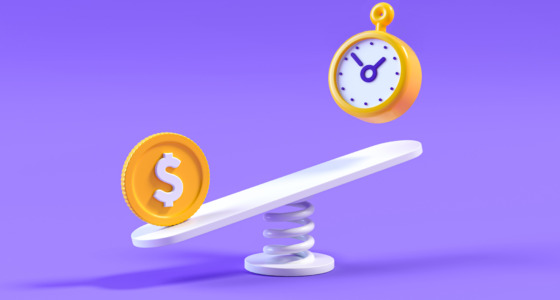

Why do you want to invest? You probably have some ideas that come to mind. The biggest financial goal for most people is to become a homeowner, which is getting harder and harder. Real estate prices have risen 73% since 2000, and the average age of first-time buyers has risen, too. So, if you want to use your investment returns to buy a house, you wouldn’t be the first to do so.
This article will talk about the importance of setting the right goals and how it can affect your investing journey.
Why goals matter
Some mistakenly believe that if you have no expectations, you can’t be disappointed. But when you look around some decades in the future, you might realize you’ve pointlessly wasted your time, energy, and efforts. Having goals in place is the first step to breaking away from the mindset of “living just to avoid disappointment” and getting to a place of direction, focus, and accountability.
With so many different ways to invest, newcomers understandably can get overwhelmed. That’s why it helps to start with the goal(s). You break down the journey from point A to point B into manageable steps. And rather than thinking that only a select few people can achieve financial prosperity, you see a clear roadmap laid out in front of you.
Defining your investment goals
The basic investment objectives are growth, preservation, and cash flow. Most investors don’t need to narrow down these objectives to a single choice; it’s usually a mix of all three.
- Growth: If you want to grow your capital through investing, you can do so by selling assets (e.g., blue-chip stocks, growth stocks).
- Preservation: This implies going for relatively safe and secure investments with modest returns.
- Cash flow: This means your priorities shift towards income and higher risk + higher rate of return.
- Secondary objectives: Factors like tax minimization and liquidity can also affect your choice of investments.
Questions to ask yourself
Here are some guiding questions before start investing:
- What are your personal goals, and what are your professional goals?
- What are your financial weaknesses?
- How much income do you need, and what do you need it for?
- When do you expect to receive returns?
- What level of risk are you comfortable with? How much can you afford to lose?
- What type of investments do you understand better? Do you have prior experience?
- What is your ideal lifestyle? What type of material things does it involve (houses, travel, boats, cars)?
- Where would you like to be when you’re 45/55/65/75?
Grouping your goals based on a timeframe
It’s helpful to segment your goals into different time horizons:
- Short-term: Reducing your debt, putting a down payment on a car, going on a vacation, building an emergency fund, growing income, taking out insurance;
- Medium-term: Putting a down payment on a house, saving for a wedding, doing renovations, paying off student debt, saving enough to start a business;
- Long-term: Becoming mortgage-free, saving for retirement, paying for your children’s tuition, buying another property.

Achieving your investment goals
Depending on the time horizons for each goal, you will need to choose appropriate investments and strategies. It doesn’t make sense to use the same approach for different periods because 1-year and 10-year goals are not the same.
When determining what amount to invest, you also need to consider the time horizons. Calculate how much your returns might change due to inflation — the further into the future, the greater the difference.
Also, incorporate a variety of different asset types into your portfolio. This will ensure one asset or asset class’s performance won’t affect your entire portfolio and set you back from reaching your desired return. And it doesn’t only include buying stocks from companies of many different sizes and sectors, you also need to have positions in different markets.
As time passes and your medium- and long-term goals get closer to becoming short-term goals, you’ll need to adjust your investments. For example, if you’re a couple of years away from retirement, start taking out your funds from the stock market.
Example portfolios for different age groups
Your investment choices will change depending on where you are in life. The sample portfolios below will illustrate how you can adjust your asset allocation.
1. Young professionals (no dependents)
Possible portfolio (relatively high risk)): aggressive growth and growth funds (70%), government bonds (25%), cash reserve (5%)
2. Working family with young children
Possible portfolio (long-term growth with lower risk): aggressive growth and growth funds (70%), government bonds (20%), cash reserve (10%)
3. Peak earners with older children
Possible portfolio: aggressive growth and growth funds (65%), government bonds (25%), cash reserve (10%)
4. Empty nesters
Possible portfolio (a blend of funds for growth and income): aggressive growth and growth funds (60%), government bonds (20%), cash reserve (20%)
5. Retirement age
Possible portfolio (more conservative funds, tax-free income): fixed income funds (40%), equity funds (30%), money market (30%).
Now you understand that goals are essential for an investor — to narrow your focus, create an investing plan, and keep you motivated along the way!









